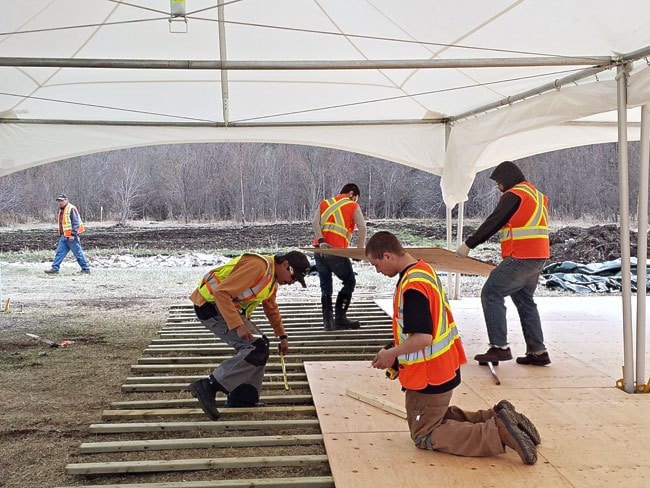Miche Genest
Special to the News
Interest in the future of sub-arctic agriculture is growing exponentially. The use of new technologies and renewable energy might one day make year-round farming possible in some of the coldest climates on Earth.
But northern agriculture is not a just a frontier of high technology. It’s also an opportunity for Yukon’s First Nations.
How does a hunter-gatherer society come to embrace gardening and farming? In some ways, the answer is simple: food security, healthy living, and self-sufficiency.
But gardens and farms also bring the community back to the land to engage with its traditional territory in a relationship that links the past and the present.
Dexter McRae, the director of human resources, education and training with the Tr’ondek Hwech’in in Dawson City, says the First Nation’s farming initiative in its traditional territory is a way to blend influences of Southern culture on their people, and to maintain the best of both worlds.
“First Nations in general have always yearned to get back to the land and pursue traditional cultural pursuits, being outdoors, respecting the land, the air, the water,” McRae says. Though farming is not an obvious first choice, it provides a way to meet that need.
In 2014, the Tr’ondek Hwech’in signed a memorandum of understanding with Yukon College to develop a sustainable, year-round teaching and working farm on its traditional territory. The long-term goal is to develop several plots of land within the traditional territory, but for now the focus is on 37 hectares on the Klondike River just outside of Dawson. The area was used as farmland until the mid-1900s (known as the Strachan Farm) and a dairy operation run by the Fournier family in the early 1900s.
For the last 40 years the land has been fallow, used occasionally by TH for general assemblies. TH has named the site Nan kak nizhi’ tr’enohshe gha etr’ehoh’ay, or “On the land we learn to grow our food” and as of June 2016 the farm school was up and running.
Twelve fully-equipped wall tents housed 20 students from four First Nations, ranging in age from 16 to 62. Students ploughed, harrowed and seeded four acres of land by the end of May. Each student had a research plot, for which they chose their own seeds and plants. They reported their findings back to the group, feeding their expertise back into the project. Students received approximately 400 hours of classroom instruction and did 600 hours of fieldwork, for which they were paid.
It was a good first year, MacRae says. “2016 was hugely successful with respect to student learning and produce development,” he says. “Thousands of pounds of potatoes, carrots, beets and other vegetables were grown. Yukon College is working to enhance the farm school curriculum in the 2017 season and a number of 2016 students are keen to return next summer.”
Research is another major component of the farm project. Yukon College’s goals include developing innovative approaches to year-round northern Yukon farming, exploring energy sources such as geothermal energy, and finding opportunities to provide work experience for college students. The Yukon College Cold Climate Innovation centre is working to design and build a made-in-the Yukon greenhouse that will be able to produce vegetables year-round, and MacRae hopes it will be up and running next year.
For TH, another important aspect of the project is incorporating traditional medicinal plants into the farm, even transplanting berries from the wild, so that elders who can’t go out picking in the bush anymore will have access to an activity vital to their wellbeing.
Eventually, TH sees itself having a leadership role in establishing markets on behalf of all Klondike region farmers, reaching into Old Crow and Fort MacPherson to provide those communities with fresh produce.
“It would be natural for us to help with that market expansion on behalf of other farmers, [to encourage] our fellow First Nations to buy their excess pork,” McRae says. “There’s also the possibility of a farm-gate store, or a community supported agriculture initiative, as long as such initiatives don’t infringe on local farmers.”
With the farm school and the eventual working farm, says McRae, TH is part of a community of citizens, residents and farmers with a goal of fresh food in the Klondike, recognizing that food security is important to everyone.
The rest of Canada is watching the project with keen interest. Maclean’s magazine and CBC have recently featured stories about the school’s program, an ambitious, innovative local agriculture initiative that models the ways in which a community North of 60 can contribute to its own food security.
This article is the last of a series commissioned by the Yukon Agricultural Association and funded by Growing Forward 2, an initiative of the governments of Canada and Yukon. If you are looking for more information about what is produced on local Yukon farms, please visit www.yukonag.ca/guide.
